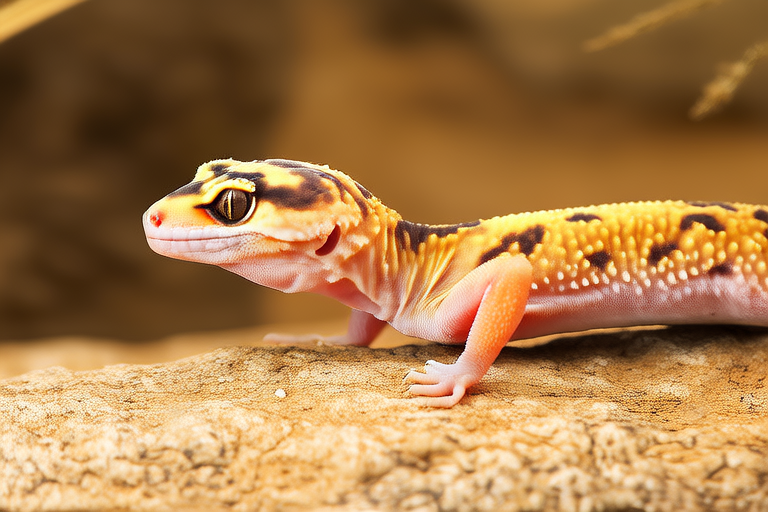Top 10 Fascinating Facts About Leopard Geckos Every Pet Owner Should Know
Leopard geckos have captured the hearts of many reptile enthusiasts with their docile nature, vibrant colors, and unique characteristics. These small lizards make excellent pets for both beginners and seasoned reptile keepers. Below are ten fascinating facts about leopard geckos that every pet owner should know.
1. Leopard Geckos Are Nocturnal Creatures
One of the most notable traits of leopard geckos is their nocturnal behavior. They are active during the night and prefer to rest during the day. This preference for nighttime activity is due to their natural habitat, which includes arid regions where daytime temperatures can become extremely hot. In captivity, it’s important to provide them with a hide box or cave where they can retreat during the day to mimic their natural environment.
2. Their Unique Tail Acts as a Fat Reserve
Leopard geckos have a distinctive tail that serves more than just an aesthetic purpose. The tail acts as a fat reserve, storing energy for times when food may be scarce. In the wild, this adaptation helps them survive periods of food shortage. However, if a leopard gecko loses its tail, it can regrow it over time, though the new one will not have the same coloration or pattern as the original.
3. Leopard Geckos Shed Their Skin Regularly
Like other reptiles, leopard geckos shed their skin as they grow. During the shedding process, which can take several days, the gecko’s skin becomes dull and dry. It is essential to ensure the environment is humid enough to facilitate easy shedding. Owners should check for any retained patches of skin, as these can cause discomfort and potential health issues if not removed properly.
4. They Have Autotomy, the Ability to Self-Amputate Their Tails
In case of danger, leopard geckos have a remarkable survival mechanism known as autotomy. When threatened, they can voluntarily detach their tails to distract predators while they escape. The detached tail continues to wiggle, drawing attention away from the gecko. Although the tail grows back, it is crucial to handle your gecko gently to prevent accidental injury.
5. Leopard Geckos Are Carnivorous Lizards
Leopard geckos are strictly carnivorous, feeding on insects such as crickets, mealworms, and waxworms. A varied diet ensures they receive all necessary nutrients. It’s important to dust their food with calcium and vitamin D3 supplements to support bone health and overall well-being. Feeding live prey also provides exercise and mental stimulation for your gecko.
6. Their Eyes Have Special Adaptations for Night Vision
Leopard geckos have large, lidless eyes that are perfectly adapted for seeing in low light conditions. Their eyes are equipped with a reflective layer called the tapetum lucidum, which enhances their ability to see in the dark. This adaptation is crucial for their nocturnal lifestyle, allowing them to hunt effectively at night.
7. Leopard Geckos Are Social Creatures
Despite being solitary animals in the wild, leopard geckos can exhibit social behaviors when kept in groups. However, it is recommended to house only one male per enclosure, as males may become aggressive towards each other. Females can be housed together, but it’s important to monitor their interactions to ensure they get along.
8. They Can Change Color Based on Temperature
Leopard geckos have the amazing ability to change their skin color based on temperature fluctuations. This thermoregulatory adaptation allows them to adjust their body temperature by moving to warmer or cooler areas within their enclosure. This behavior can also influence their appearance, making them even more visually appealing to owners.
9. Leopard Geckos Are Relatively Easy to Breed
For those interested in breeding, leopard geckos are relatively straightforward to breed in captivity. Providing the right environmental conditions, including appropriate temperatures and humidity levels, can encourage mating. Female geckos can lay multiple clutches of eggs throughout the breeding season, with each clutch containing two eggs. Proper incubation techniques are necessary to ensure healthy hatchlings.
10. Leopard Geckos Have Specialized Scales for Walking
The bottom of a leopard gecko’s feet are covered in tiny, sticky scales called lamellae, which allow them to walk on smooth surfaces like glass or plastic. These specialized scales help them grip surfaces and move efficiently. Additionally, their toes are equipped with adhesive pads that further enhance their climbing abilities, enabling them to navigate various terrains in their natural habitat.
Understanding these fascinating facts about leopard geckos can greatly enhance your experience as a pet owner. By providing the right care and environment, you can ensure your gecko leads a happy and healthy life. Whether you’re a novice or an experienced reptile keeper, taking the time to learn about your pet’s unique characteristics will deepen your bond and appreciation for these captivating creatures.
